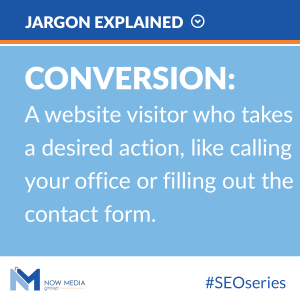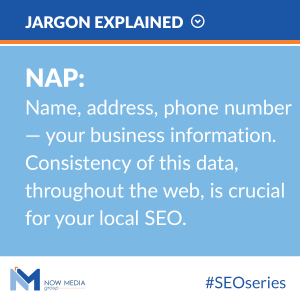Want to hear a surprising fact? Most small business owners don’t know they can track how much business they’re getting from their digital (online) marketing. If this is you, don’t worry; this blog explains how you can track the revenue your marketing budget is earning your business.
What is Conversion Tracking?
Depending on the scope of your digital marketing, you’re getting customers from a variety of sources, including social media, online advertisements, and directly from your website. If you’re not tracking your customers’ online journey, then you don’t know which of these sources of traffic are making you money and which aren’t. Which means that you’re not optimizing your budget to get the most out of it, and you’re not getting the data that reveals where it would be profitable to increase your budget.
 You should know that it is possible to track how your customers found your business, and in a much more accurate manner than simply asking them how they found you when you speak to them over the phone. We can actually track the customer’s journey from the second they click on one of your ads, or find you through social media, or even through organic search, to the point that they become a tangible lead or make an online purchase. And we can then ascribe that final purchase to the marketing campaign that brought them to you in the first place. In marketing-speak, it’s called conversion tracking.
You should know that it is possible to track how your customers found your business, and in a much more accurate manner than simply asking them how they found you when you speak to them over the phone. We can actually track the customer’s journey from the second they click on one of your ads, or find you through social media, or even through organic search, to the point that they become a tangible lead or make an online purchase. And we can then ascribe that final purchase to the marketing campaign that brought them to you in the first place. In marketing-speak, it’s called conversion tracking.
Let’s start with the idea of a conversion. This is an action taken by the user — the potential customer — that accomplishes a goal that you’ve set for a specific marketing campaign.
Suppose you are a bankruptcy attorney with a great e-book the helps people through the bankruptcy process. The e-book is popular and it’s a great source of leads, because, in order to download it, that person needs to first fill out a short form with her name and email address. The action you want people to take is to submit that contact form, so a marketer would refer to that action — submitting the form — as the conversion.
Each conversion, whether it’s a form submission or a phone call, can be tracked. I can, for example, add a snippet of code to the submission button that tells me when someone successfully submits that form. Why does this data matter? Let’s say that you’re spending $1,000/mo. on a marketing campaign that draws traffic to that form. If you know how many conversions you’re getting within that same time period, you also know how much each conversion cost on average, which tells you whether that marketing campaign is profitable.
Most of the time, though, your marketing campaign will involve attracting traffic from various sources, such as Google ads, Facebook ads, and organic search (SEO). And each of these sources of traffic require their own budgets. To really know what elements of your marketing campaigns are working, and which ones aren’t, you’d need to know the number of conversions from each individual source of traffic. This too is possible with conversion tracking.
If you are investing in Google ads, for example, the tracking software on your website (such as Google Analytics) will know when someone finds your website via a Google ads. In fact, even if that person closes your website and returns to it a week later, the software will remember that the initial source of the visit was a Google ad. When that person finally submits the form, that conversion will be associated to your pay-per-click campaign.
You can track just as effectively with Facebook, your email campaigns, and pretty much every other source of online traffic. In fact, suppose you have two sets of Facebook ads and you want to see which is the most effective, you can track both sets separately. You can get specific and segmented cost-per-conversion and cost-per-acquisition data for all of your digital marketing, giving you the insight you need to allocate your marketing budget towards the most productive outlets.
Call Tracking: What is it and can it hurt my website?
Form submissions aren’t the only kind of conversions. Having a visitor find your number on your site and call your business is also a marketing goal, and is therefore also a conversion. The way to track these conversions is by using call tracking.
The way call tracking works is best explained by way of example. Imagine that you are Dr. Joe Griffin, you have a Google ad campaign for your dental implant InfoSite, and you want to track phone call conversions from that campaign.
However, in order to know the source of that call, you need a tracking number that is specifically associated with the ad campaign. In order for this to work, the number can only show up if the visitor clicked on an ad to reach your website. This is done by means of Dynamic Number Insertion, which replaces your business number with a forwarding number if and only if the caller came to you via an ad.
This is what it looks like when someone reaches Dr. Griffin’s website directly or through organic search:
![]()
This is what it looks like when someone visits the site from a Google ad:
![]()
You can use tracking numbers to track conversions from a broad range of traffic sources, including organic search, paid ads, social media, and email. For each source of revenue you want to track, all you need is a unique tracking number and a code that informs the software of where the visitor came from (to show them the correct tracking number).
There is one common argument against the use of tracking numbers: that it hurts your SEO. This is wrong.
 The argument is based on the fact that a strong local SEO strategy requires that your business information on your website, on your Google My Business listing, and on all your other citations throughout the web, should be the same. This includes your business number. If your website is showing different business numbers, won’t this undermine your local SEO?
The argument is based on the fact that a strong local SEO strategy requires that your business information on your website, on your Google My Business listing, and on all your other citations throughout the web, should be the same. This includes your business number. If your website is showing different business numbers, won’t this undermine your local SEO?
No, because your website is only showing a different number if the visitor came from the specific source that the tracking number displays for. Google crawlers — the bots that look at your site, to parse the data, and indirectly help to determine its ranking — reach your website is a completely different way, so Google still sees your actual business number. Just to reiterate, there is no SEO penalty for using a tracking number, as long as the tracking number is used the right way.
Do You Know if Your Marketing is Profitable?
Conversion tracking is a very powerful tool, because it gives you pretty precise data on the performance of your marketing. Not only that, but you can judge which facets of your marketing are creating business and which ones aren’t, so that over time you can continue to tweak and optimize your campaigns to maximize your profits. Despite this, a remarkably small percentage of small businesses are really benefiting from conversion tracking.
If you want a profitable, streamlined, and monitored digital marketing campaign, I encourage you to learn more about how to track its performance by visiting our page on conversion optimization. I also recommend that you get in touch with us, so that we can help bring your marketing up to speed with the kind of tracking that’s possible today.
Do you have a comment, question, or concern? Don’t be shy; leave a comment below. I look forward to our conversation!